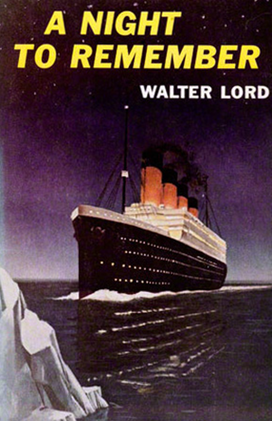Walter Lord ’39 Enjoys Continued Success With his Titanic Book
In 1998, PAW wrote about Walter Lord ’39’s fascination with the story of the Titanic, which began when he was 9. Lord died in 2002 at the age of 84.

Lord, who suffers from Parkinson's disease and gets about in a wheelchair, is the author of 13 books, the most famous of which is A Night To Remember. A minute-by-minute account of the sinking of the ship and the later rescue of 705 people, it was published 43 years ago and has never been out of print. "My book had an enormous success in 1955," says Lord. "It gradually dropped off bestseller lists, but then suddenly it came back up again in 1985, when Bob Ballard found where the Titanic was located."
And now with a Broadway musical and a box-office megahit movie based on the tragedy, Lord's book is again a bestseller, No. 2 on the paperback list at the beginning of March. "I don't know what to make of the infatuation people have with this story," admits Lord, but he says his own fascination with the Titanic began when he was nine years old, when he sailed with his family and governess on the Titanic's sister ship, the Olympic.
The son of a lawyer, Lord grew up in Baltimore and came to Princeton from the Gilman School. A history major, he wrote his thesis on the 19th century Collins steamship line. Lord earned a law degree from Yale and was in the OSS during World War II. He then worked as a copywriter for an advertising firm in New York before turning to writing full-time in 1956.
Lord devised his writing style — a meticulous, minute-by-minute reconstruction of events in spare prose — for A Night To Remember, his second book, and used it again in such books as A Day of Infamy, about the Pearl Harbor attack, and The Past Would Not Die, about the civil rights movement. His research involves numerous interviews with eyewitnesses and participants. For A Night To Remember, Lord interviewed 63 survivors. After a movie based on his book came out in 1958, he interviewed another 60. Those interviews and other papers related to the Titanic will eventually go to a maritime museum in England.
Has Lord seen the Broadway musical or the new movie? "Yes, I've seen each one three times," he says. "Both are good, and the movie is a marvelous piece. It gets so many things right." While admitting he did not cry at the movie, as so many people have, he is moved still by the heroism on board the ship. "There were a lot of heroics," he says, referring to, among many examples, the musicians who played until the final moments. "I was especially touched by the bell boys, running messages back and forth. And the men who kept the lights on until the end. They weren't seamen, people who loved the sea. They were just electrical engineers, doing a job. All were lost."











No responses yet